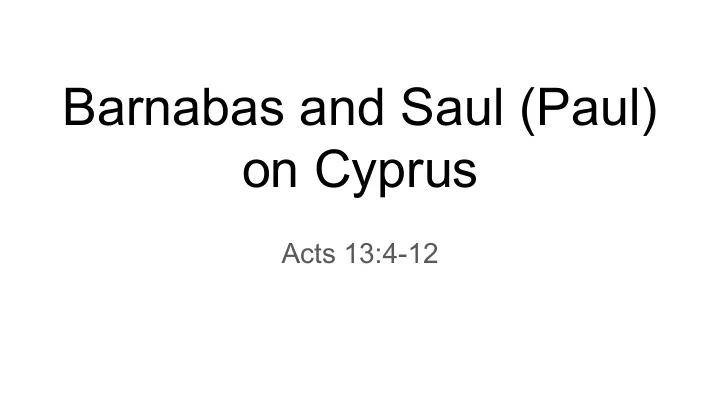

Barnabas and Saul (Paul) on Cyprus Acts 13:4-12
Solomon’s Portico - artist’s rendition http://bibleillustration.blogspot.com/2010/09/bible-artist-news.html
Solomon’s Portico - artist’s rendition http://bibleillustration.blogspot.com/2010/09/bible-artist-news.html
Solomon’s Portico - artist’s rendition http://bibleillustration.blogspot.com/2010/09/bible-artist-news.html
Solomon’s Portico - artist’s rendition http://bibleillustration.blogspot.com/2010/09/bible-artist-news.html
Roman trireme with a drawbridge https://www.romae-vitam.com/roman-ships.html
Roman trade ship of 1st century B.C. https://www.modelships.de/Roman-trade-ship/Roman-trade-ship.htm
Mount Olympus, 6,404 feet elevation https://www.nationsonline.org/oneworld/cyprus.htm
Cyprus landscape Image by dimitrisvetsikas1969 on Pixabay
Aphrodite's Rock (Petra tou Romiou) on the coast in Paphos, western Cyprus https://www.nationsonline.org/oneworld/cyprus.htm
Roman gymnasium at Salamis, Cyprus https://en.wikipedia.org/wiki/Salamis,_Cyprus
Roman gymnasium at Salamis, Cyprus https://www.bibleplaces.com/salamis-cyprus/
Roman theater at Salamis, Cyprus - could seat 15,000 people https://en.wikipedia.org/wiki/Salamis,_Cyprus
Roman theater at Salamis, Cyprus - could seat 15,000 people https://www.bibleplaces.com/salamis-cyprus/
“Cyprus figures in cuneiform texts from the eighteenth century B.C. on under the name Alashiya, the Elishah of Gen. 10:4. (It is usually called Kittim in the OT, from the name of its chief Phoenician settlement Kition (modern Larnaka).) Its principal export was copper, to which is gave its name. Its inhabitants in early days were known to the Greeks as Eteocypriots, but in historical times it was extensively colonized by Greeks and Phoenicians. It was annexed by Rome in 57 B.C., and was incorporated in the province of Cilicia two years later…. Bruce, 246
….In 27 B.C. it became a separate province, governed on behalf of Augustus by an imperial legate; in 22 B.C. Augustus transferred it to the control of the Roman senate, and from that year, like other senatorial provinces, it was administered by a proconsul, as Luke indicates in verse 7.” Bruce, 246
Solomon’s Portico - artist’s rendition http://bibleillustration.blogspot.com/2010/09/bible-artist-news.html
So, being sent out by the Holy Spirit, they went down to Seleucia, and from there they sailed to Cyprus. When they arrived at Salamis, they proclaimed the word of God in the synagogues of the Jews. And they had John to assist them. When they had gone through the whole island as far as Paphos, they came upon a certain magician, a Jewish false prophet named Bar-Jesus. He was with the proconsul, Sergius Paulus, a man of intelligence, who summoned Barnabas and Saul and sought to hear the word of God. Acts 13:4-7
But Elymas the magician (for that is the meaning of his name) opposed them, seeking to turn the proconsul away from the faith. But Saul, who was also called Paul, filled with the Holy Spirit, looked intently at him and said, “You son of the devil, you enemy of all righteousness, full of all deceit and villainy, will you not stop making crooked the straight paths of the Lord? And now, behold, the hand of the Lord is upon you, and you will be blind and unable to see the sun for a time.” Acts 13:8-11
Immediately mist and darkness fell upon him, and he went about seeking people to lead him by the hand. Then the proconsul believed, when he saw what had occurred, for he was astonished at the teaching of the Lord. Acts 13:11-12
“As a Roman citizen, Paul would have had three names - praenomen, nomen gentile, and cognomen - of which Paullus was his cognomen . It is probably a mere coincidence that Luke should first designate him by his Roman name in a context where another Paullus figures. The apostle’s praenomen and nomen gentile have, unfortunately, not been preserved; the nomen gentile would probably have given some indication of the circumstances in which his family acquired Roman citizenship.” Bruce, 249
Recommend
More recommend